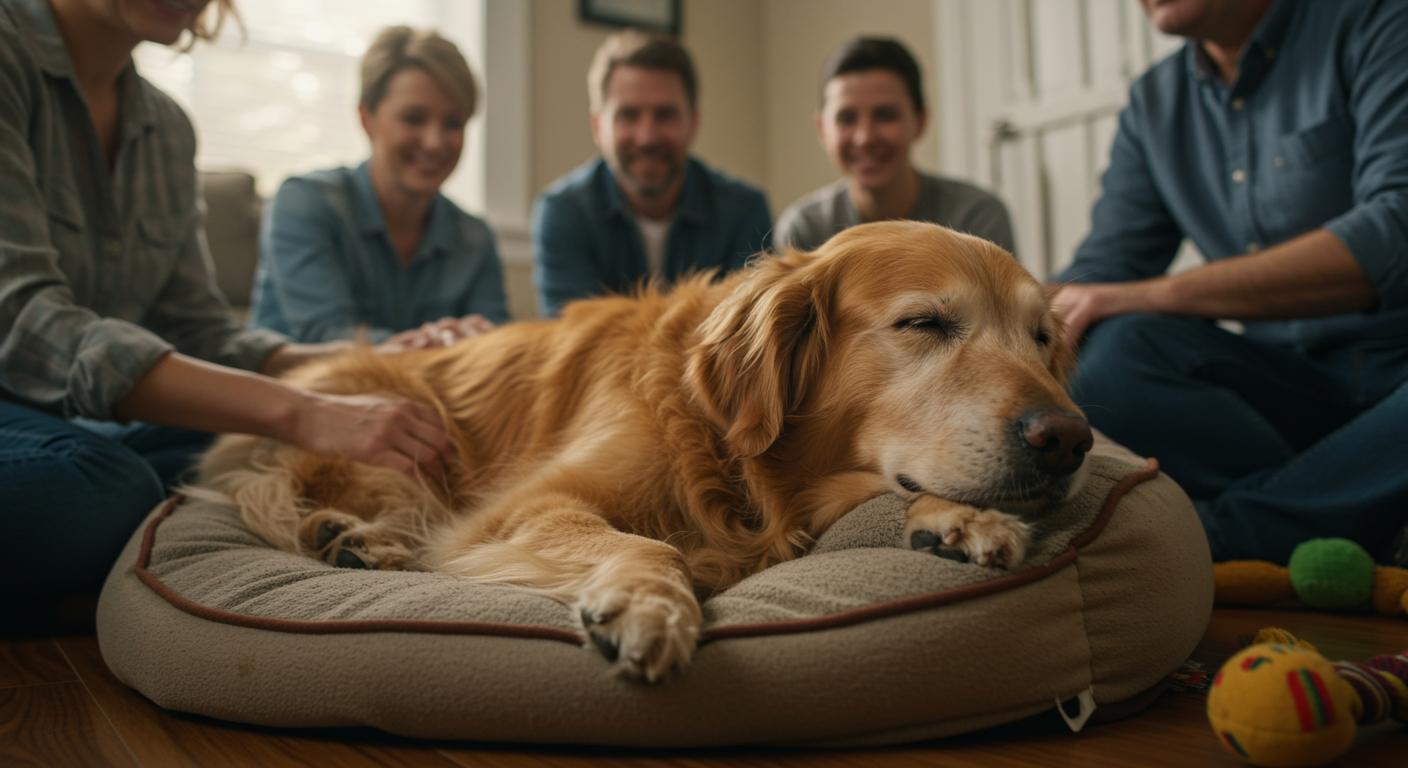The Enduring Charm of the Golden Retriever: More Than Just a Pretty Face
Golden Retrievers have long held a coveted spot in the hearts of dog lovers worldwide, frequently topping lists of the best family pets. Their beaming smiles, luxurious coats, and wagging tails are iconic. But beyond their undeniable beauty and popular image, what truly makes a Golden Retriever an ideal companion for a household with children? This article delves deep into the core temperament traits that define this beloved breed, exploring why they are, for many families, the perfect four-legged addition.
Understanding the Golden Retriever Temperament: Key Traits for Family Life
The temperament of a Golden Retriever is often described in glowing terms: friendly, gentle, intelligent, and eager to please. These aren’t just buzzwords; they are fundamental characteristics that translate directly into how a Golden interacts within a family setting, especially with children.
The Gentle Giant: Patience and Tolerance
One of the most praised attributes of Golden Retrievers is their remarkable patience. Children, particularly young ones, can be unpredictable. They might pull an ear, lean too heavily, or stumble into a dog’s space. A well-socialized Golden Retriever typically handles these interactions with an impressive degree of tolerance and calmness. They are rarely quick to anger or aggression, often choosing to simply move away rather than react negatively.
The Playful Spirit: A Built-In Best Friend
Golden Retrievers retain a puppy-like playfulness well into adulthood. This inherent joy for life makes them fantastic playmates for children of all ages. Whether it’s a gentle game of fetch in the backyard, a romp in the park, or simply wrestling with soft toys, their enthusiasm is infectious. This shared love for play fosters a strong bond between the dog and the child, often turning them into inseparable companions.
The Intelligent Learner: Trainability for Harmony
Golden Retrievers are highly intelligent and possess a strong desire to please their owners. This combination makes them relatively easy to train, even for first-time dog owners. For families, this is a huge advantage. A well-trained Golden understands boundaries, responds to commands, and integrates smoothly into the family routine. Teaching them good manners around children – like not jumping up or nipping – is crucial and generally achievable with consistent, positive reinforcement.
The Loyal Protector: A Loving Guard, Not an Aggressive One
While Golden Retrievers are not typically guard dogs in the aggressive sense, their loyalty to their family is profound. They are instinctively protective, not through barking threats or displays of aggression, but through their watchful presence and alarm-barking if something seems amiss. Children often feel incredibly safe and loved in the presence of their Golden, viewing them as a comforting, ever-present guardian.
The Social Butterfly: Embracing the Chaos
Family life can be noisy and chaotic, especially with children. Unlike some breeds that prefer quiet solitude, Golden Retrievers generally thrive in a busy household environment. They love being involved in family activities, whether it’s movie night on the couch, a picnic in the park, or just hanging out while kids play. Their social nature means they want to be where the action is, embracing the hustle and bustle rather than retreating from it.
Setting the Stage for Success: What Families Need to Do
While Golden Retrievers possess many ideal traits, their success as a family dog is also heavily dependent on the family’s commitment.
H3: Early Socialization and Training Are Non-Negotiable
A well-adjusted Golden begins with early and consistent socialization. Exposing your puppy to various sights, sounds, people, and other friendly dogs from a young age is crucial. Continued positive reinforcement training helps solidify good behaviors and builds confidence.
H3: Teaching Children Respectful Interaction
Just as important as training the dog is teaching children how to interact respectfully with their canine companion. Lessons on gentle touching, recognizing a dog’s body language (when they want to play, when they need space), and understanding the dog’s personal boundaries are vital for a harmonious relationship.
H3: Providing Ample Exercise and Mental Stimulation
A bored Golden Retriever can develop undesirable behaviors. These intelligent and energetic dogs require plenty of physical exercise (daily walks, runs, fetch) and mental stimulation (puzzle toys, training sessions) to stay happy and well-behaved. An exercised Golden is a calm Golden.
Conclusion: A Heart Full of Gold for Your Family
The Golden Retriever’s reputation as a quintessential family dog is well-earned. Their gentle nature, boundless patience, playful spirit, and unwavering loyalty make them exceptional companions for children. While no dog is a “plug-and-play” pet and requires commitment, effort, and responsible ownership, a Golden Retriever, when properly socialized and trained, offers a lifetime of unconditional love, joy, and unforgettable memories to any family willing to open their home and their hearts. They aren’t just pets; they become integral, cherished members of the family, truly embodying a heart full of gold
A Real-Life Tip: I’ll never forget the first time our Golden, Daisy, met our newborn. We were nervous, but Daisy approached with such gentle curiosity, just a soft sniff and then a calm lie down nearby. It showed us that even with new, tiny family members, their natural inclination is toward gentleness. We always supervised closely, but her inherent kindness made the transition so much smoother.

Rafael Souza is a digital marketing strategist and lifelong dog enthusiast. Passionate about Golden Retrievers, he shares practical, research-based tips to help owners provide healthier and happier lives for their furry companions.





